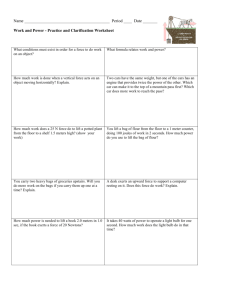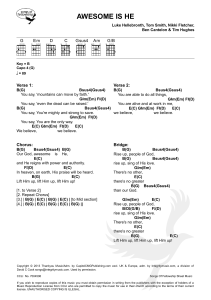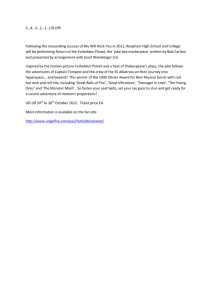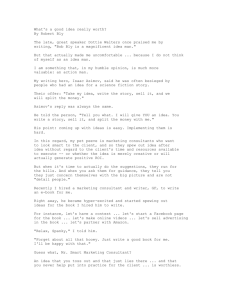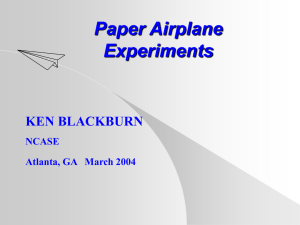Aerospace Semester Exam
advertisement
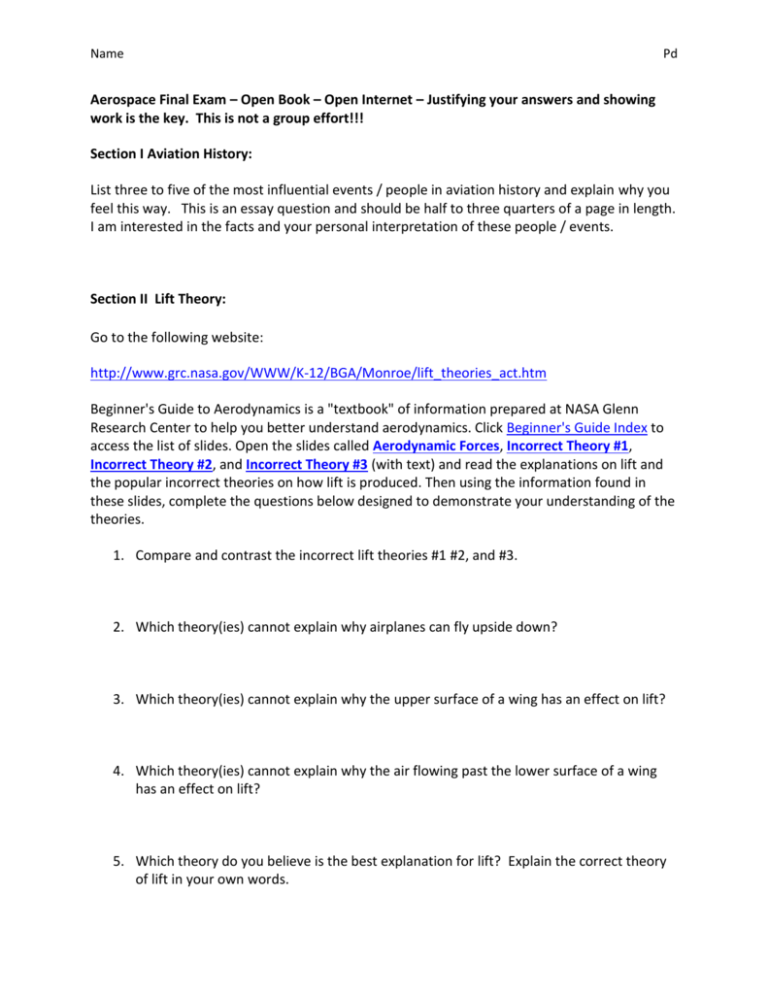
Name Pd Aerospace Final Exam – Open Book – Open Internet – Justifying your answers and showing work is the key. This is not a group effort!!! Section I Aviation History: List three to five of the most influential events / people in aviation history and explain why you feel this way. This is an essay question and should be half to three quarters of a page in length. I am interested in the facts and your personal interpretation of these people / events. Section II Lift Theory: Go to the following website: http://www.grc.nasa.gov/WWW/K-12/BGA/Monroe/lift_theories_act.htm Beginner's Guide to Aerodynamics is a "textbook" of information prepared at NASA Glenn Research Center to help you better understand aerodynamics. Click Beginner's Guide Index to access the list of slides. Open the slides called Aerodynamic Forces, Incorrect Theory #1, Incorrect Theory #2, and Incorrect Theory #3 (with text) and read the explanations on lift and the popular incorrect theories on how lift is produced. Then using the information found in these slides, complete the questions below designed to demonstrate your understanding of the theories. 1. Compare and contrast the incorrect lift theories #1 #2, and #3. 2. Which theory(ies) cannot explain why airplanes can fly upside down? 3. Which theory(ies) cannot explain why the upper surface of a wing has an effect on lift? 4. Which theory(ies) cannot explain why the air flowing past the lower surface of a wing has an effect on lift? 5. Which theory do you believe is the best explanation for lift? Explain the correct theory of lift in your own words. Name Pd Section III: Function of Airplane Components: Describe the purpose of each of the following airplane components and explain how a pilot can maneuver the plane by adjusting the proper controls. Make sure to use the words yaw, pitch, and roll in your answer where appropriate. Aileron, Elevator, Fuselage, Rudder, flaps, horizontal and vertical stabilizers. Section IV: Lift, Drag, and Newton’s Laws: 1. Write the equation for Lift and Drag below – define each variable and list the standard units for that constant. When doing calculations below – make sure that you are showing your work!!! Proper conversions are necessary for you to get the answer correct. 2. Do some research about the Boing 737. Estimate the wing area of this plane – make sure to state what your estimations are – and show a drawing /calculation to justify your answer. Be detailed in your response – don’t just take the easy way out! 3. What is the cruising speed of a Boeing 737? At what altitude does this occur? 4. Open Foil Simm and find out what the air density is at that altitude. 5. Assuming that the coefficient of lift for this aircraft is 0.52, calculate the Lift of the aircraft at cruising altitude. Show work! Make sure you have converted properly. 6. Compare this with the weight of the aircraft – in your scenario – would the airplane be accelerating upward, downward, or cruising at that altitude? Justify your answer with Newton’s Laws. State the appropriate law and explain. 7. Calculate the drag of the Boeing 737 using your above data. Assume the coefficient of drag is 0.031. 8. What is the Lift to Drag Ratio for a Boeing 737? Show your work! Name Pd 9. Assuming the thrust of a Boeing 737 is 177 kN, is the plane speeding up, slowing down, or cruising at a constant speed? Justify your answer with Newton’s Laws. State the appropriate law and explain. Section V: Gliders 1. What is a glide ratio? 2. Calculate the glide ratio for the balsa glider you constructed in class. Use your most recent data! 3. Go online and do some research about glide ratios – how does the glide ratio you just calculated compare to this? Discuss & be specific – name the glider you are comparing it to and cite your sources.

